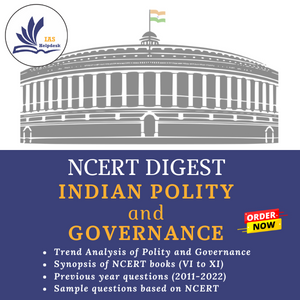What are Postal Ballots?
Description
What are Postal Ballots?
With the motto of “no voter to be left behind”, the Election Commission of India (ECI) has announced that media persons covering "polling day activities" are now eligible to vote in the upcoming Lok Sabha Elections and state Assembly polls through postal ballots.
What are postal ballots?
Postal ballots, also known as mail-in ballots, allow registered voters to cast their votes by mail instead of physically going to a polling station. This system serves as a convenient alternative for individuals unable to vote in person due to various circumstances, such as being away from their home constituency, facing a disability, or performing essential services on election day.
Who is eligible to cast their vote through postal ballots?
Eligible electors who can opt to vote through postal ballots include:
· Service voters: Members of the armed forces, paramilitary forces, and government employees deployed on election duty far from their home constituencies.
· Absentee voters: Individuals unable to vote in person due to reasons like work commitments, illness, or disability.
· Electors on election duty: Government officials and polling staff assigned duties at polling stations other than their own.
· Electors under preventive detention: Individuals detained under preventive custody orders during the election period.
· Essential services covering polling day activities: Media persons with authorisation letters from the EC and those involved in essential services such as metros, railways, and healthcare have the option to vote using postal ballots in Lok Sabha and four state Assembly polls.
In October 2019, the Ministry of Law and Justice amended the Conduct of Election Rules, 1961, lowered the age from 85 to 80 and allowed Persons with Disabilities (PwDs) to cast votes through postal ballots in the 2020 Delhi Assembly polls.
Electronically Transmitted Postal Ballot System
ETPBS has empowered and ensured all eligible service electors with their constitutional power to vote while performing their duty for the nation. This system ensures that the postal ballot should be transmitted to the service voter with complete documents (form 13A, 13B, 13C, and postal ballot) in a secured way.
The Electronically Transmitted Postal Ballot System (ETPBS) is developed by the Election Commission of India and implemented in line with the existing Postal Ballot System. Postal Ballot will be transmitted through Electronic means to the voters. It enables the voters to cast their vote on an electronically received postal ballot from their preferred location, which is outside their originally assigned voting constituency, and send back the marked postal ballot through the post.
Here in ETPBS system this postal ballot is sent in two parts i.e., e-Postal Ballot and e-PB PIN. The e-Postal Ballot is sent to the Unit officer of the service officer which will be a password protected PDF. Similarly the e-PB PIN will be sent to the Record officer of the service voter. The Service voter has to collect e-PB and e-PB PIN from both officers, take print outs and follow the instructions to cast the vote. The e-PB needs to be sent on the provided address before the counting date by Post.
Benefits of Service Voter Portal:
· Secured way to transmit the postal ballot to the service voter in a remote area
· End to end encryption with multiple secured feature to avoid the duplicate PB
· Multiple checks and validation to ensure the correct e-PB gets transmitted
· Facility to transmit the e-PB for AC and PC election.
Conclusion
The Postal Ballot System in India embodies the nation's commitment to fostering a vibrant and inclusive democracy. By removing barriers to participation and empowering marginalized communities, it strengthens the foundations of representative governance. As India continues on its democratic journey, the evolution and refinement of the postal ballot system will remain integral to ensuring that every voice is heard and every vote counts.

